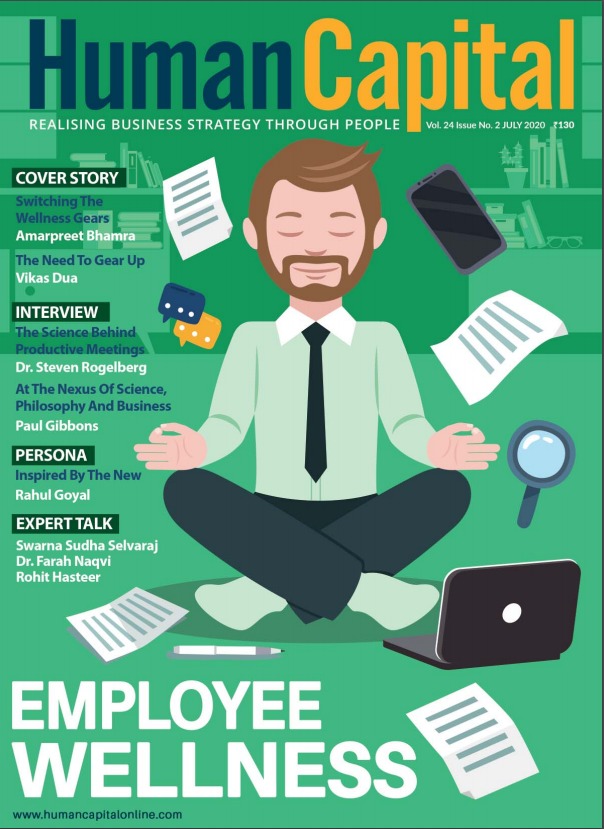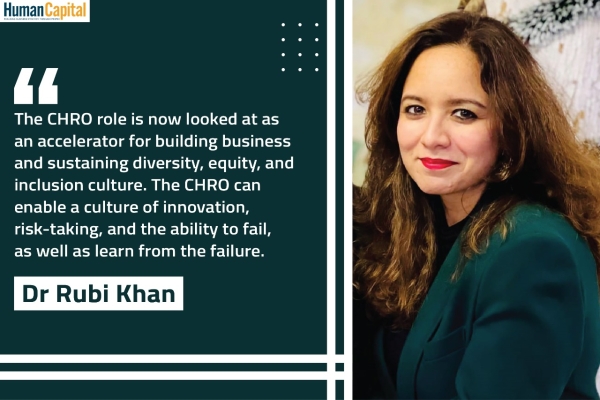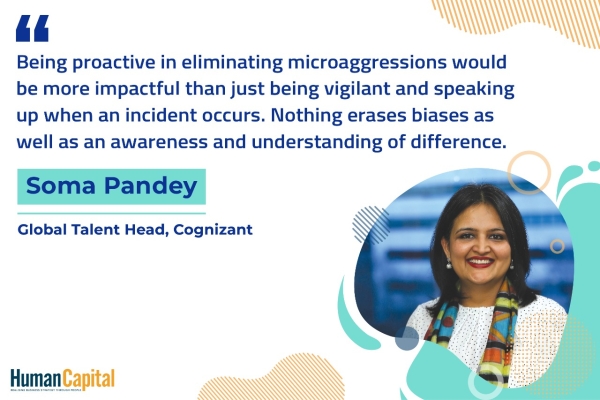When it is well implemented, a competency-based approach could truly enhance the effective utilisation and deployment of talent, spurring career growth.
Of late, leaders in organisations are concerned about the existing competency models and are being vocal - or coming about with outright dissatisfaction - with these models. Typically, most competency-based assessments attempt to measure an individual's competence against the prescribed standards of performance. E.g. if a job role has established a set of entry? level standards or requirements of competency, then it is incumbent that all new entrants match those expectations. A competency based assessment is a process of determining whether a candidate or incumbent meets the predetermined standards of performance, i.e., whether they demonstrate competence.
Need for detailing and outlining
Competency? based assessment is generally complicated and requires a certain amount of detailing and effort into outlining the right competency dictionary for assessment. This has created room for some amount of disgruntlement from all quarters - be it participants or the HR departments. The primary objections that generally surface with regard to this are that such an assessment:
(a) Assesses only that which is trivial or superficial
(b) Is inherently unreliable since it involves inference by a human being
(c) Is inherently invalid as a lot depends on the articulation of the descriptors
(d) Represents a departure from the traditionally proven methods of assessment
(e) Neglects the importance of knowledge and experience
(f) Focuses on outcomes to the neglect of processes
(g) Relies on the professional judgement of one or more people, and is hence too subjective
(h) Tries to assess attitudes or predispositions
Demarcating the competencies
While each of the aforesaid objections about competency?based assessment is justified, a well? designed competency? based assessment system can overcome such objections. It has been seen that competency models are built and implemented using 15, 20, 30, or more competencies, with varying degrees of complexity and levels. There is a growing urge to demarcate the competencies at various levels (E.g. the enterprise level,functional level, leadership level, etc.). When each level has five to ten competencies, it is easy to see how the size of the total models can attain twenty or even forty competencies. Adding multiple levels of proficiencies (e.g., "needs improvement", "meets expectations") for each competency renders it as quite a labyrinth to navigate. For instance, one of my clients had a laundry list of twelve competencies including "Entrepreneurial Mindset", "Risk-Taking", and "Profitability Focus" in an organisation that rewarded strict adherence to norms and provided little room for innovation.
Client feedback across multiple sectors sheds light on some prevailing reasons. The most commonly cited reason is that line leaders and employees strongly dislike working with large and dense competency models. Training line managers and HR departments to work with competencies and ensuring uniformity in understanding the model sought by them is easily comprehensible and adaptable when it comes to selection and development.
Non-resonating models
In my experience, the models created by external consultants often use vocabulary that does not resonate with the employees. They also tend to be generic, and at times use high-ended language, which is difficult to interpret in day-to-day parlance. Typically, competencies such as "Interpersonal Skills" tend to be used with a common descriptor without modifications. While generically packaged competencies make leeway for comparison across sectors and check the broad patterns, they often create misalignment with the values that constitute the core DNA of the organisation. As a consequence, line leaders and employees transfer ownership of the competency framework to HR.
When employees fail to buy into a competency model, both the model and the business quickly feel the negative consequences. The lack of buy-in turns into a kiss of death for the model. This is often simply ignored, unutilised by the line leaders since it was designed for talent management processes. This does not play out well for the talent functions since the base of their work is grounded in their competency model. They are seen struggling to deliver their services across the enterprise to select and develop the best employees.
Inherently, a competency model is an academic construct that transplants itself into the workplace. Given such a research mindset, competency models are built to be extremely comprehensive in order to explain maximum variance or predict employee performance on the job - in theory. While there is great value indeed in creating a model that can maximise prediction, there are diminishing returns wherein the addition of competencies to models does little to enhance their ability to predict the future. Incorporating large numbers of competencies into a model does not improve it, even from the standpoint of research.
Differentiating chalk and cheese
The reality is somewhat different. While every client is unique in their strategy, culture, environment, and values, there is absolutely no reason to assume that a good performance by one company shall apply to other companies. Likewise, the generic competencies that work for one organisation often do not work in another.
On the basis of my experience with clients, the following guidelines prove to be beneficial while making a competency-based assessment framework more effective within an organisation:
Business Outcome Focused: Competencies need to define what works for the business in the context of the client's reality, and articulate what quality talent does to help the company in achieving the mission and aspirations. E.g., "Store Operations" is a great competency to articulate in the retail sector, but outside of this context, it does not have much meaning.
Setting the Standards: Behaviours are articulated to set standard benchmarks and expectations in a manner that seems partly achievable to employees, and is easy to see as well as envision in action.
Tactile: Competency descriptors need to be developed through live-action or hands-on experience of the client's operations as against borrowing them from a competency library. The language must be simple and unambiguous. "Problem Solving Approach" implies one thing for one client, and something different for another.
Culture-Specific: Competencies need to capture the DNA of the organisation. A hospital talking about "Customer Service Orientation" carries a different perspective than a manufacturing business that talks about the same competency. Likewise, "Financial Acumen" is something that means different things for different businesses.
Simple and Practical: Balances length and comprehen-siveness to cover the essentials of the role and what is most important to the strategy.
In my experience, benchmarks and cross-company comparisons do not make clients to shape their talent management priorities. In reality, benchmarks appear interesting but do not add real value back to the business. Other data is actually far more relevant to help them achieve talent management goals. Companies need to focus on differentiation.
The true rigour in a competency-based assessment approach is in its implementation. This is the ability to carry through the framework and get everyone from the leaders down to the lowest employee levels to talk about the competencies, understand it, and reinforce it in daily actions. When it is well implemented, a competency-based approach could truly enhance the effective utilisation and deployment of talent, spurring career growth. That, in effect, would drive everlasting change in the organisation.
Do you look forward to permanently working from home after the pandemic subsides?
Trending
-
SBI General Insurance Launches Digital Health Campaign
-
CredR Rolls Out 'Life Happens' Leave For Its Employees
-
Meesho Announces 30-Week Gender-Neutral Parental Leave Policy
-
Microsoft Unveils Tech Resilience Curriculum To Foster An Inclusive Future
-
60% Indian Professionals Looking For Job Change Due To COVID: Survey
-
SpringPeople And Siemens Collaborate For Digital Transformation Push
-
86% Professionals Believe Hybrid Work Is Essential For Work Life Balance: Report
-
Almost 1 In Every 3 People's Personal Life Affected Due To Work Stress
-
Meesho Rolls Out Reset And Recharge Policy For Employees
-
80% Of Talent Leaders & Academics Say Pandemic Changed Skill Needs For Youth: Report
-
Hero Electric Rolls Out 'Hero Care' Program For Employees
-
Human Capital In Collaboration With ASSOCHAM Hosts Virtual Conference
-
IKEA India, Tata STRIVE Collaborate To Create Employability And Entrepreneurship Opportunities
-
SAP India, Microsoft Launch Tech Skilling Program for Young Women
-
DXC Technology, NASSCOM Collaborate For Employability Skills Program
-
Lenskart To Hire Over 2000 Employees Across India By 2022
-
Mindtree Launches Learn-and-Earn Program
-
Tata AIA Extends 'Raksha Ka Teeka' To Its Employees
-
Swadesh Behera Is The New CPO Of Titan
-
NetConnect Global Plans To Recruit 5000 Tech Professionals In India
-
Hubhopper Plans To Hire 60% Of Indian Podcasters By 2022
-
Corporate India Needs More Women In Leadership Roles: Report
-
Aon to Invest $30 Million and Create 10,000 Apprenticeships by 2030
-
Tech Mahindra Launches ‘Gift a Career’ Initiative for Upskilling of Youth
-
40% Women Prefer Flexible Working Options in Post-COVID World: Survey
-
3 out of 4 companies believe they can effectively hire employees virtually: Report
-
Vodafone , CGI and NASSCOM Foundation launch digital skills platform
-
Odisha: Bank, postal employees to deliver cash for elderly, differently-abled persons
-
Skill India launches AI-based digital platform for "Skilled Workforce"
-
Hiring activity declines 6.73% in first quarter: Survey
-
70% startups impacted by COVID-19 pandemic
-
Bajaj Allianz Life ropes in Santanu Banerjee as CHRO
-
Over 70 Percent MSMEs look at cutting jobs to sustain businesses
-
93 Per Cent employees stressed about returning to office post-lockdown
-
Johnson & Johnson India announces family benefits for same gender partners
-
Indian firms turning friendly towards working mothers
-
Welspun India names Rajendra Mehta as new CHRO
-
Wipro partners with NASSCOM to launch Future Skills platform



Human Capital is niche media organisation for HR and Corporate. Our aim is to create an outstanding user experience for all our clients, readers, employers and employees through inspiring, industry-leading content pieces in the form of case studies, analysis, expert reports, authored articles and blogs. We cover topics such as talent acquisition, learning and development, diversity and inclusion, leadership, compensation, recruitment and many more.
Subscribe Now












































Comment